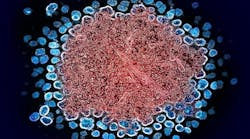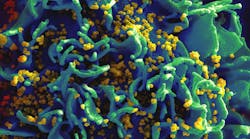Long-acting antiretroviral therapy (ART) with cabotegravir and rilpivirine was superior in suppressing HIV replication compared to daily oral ART in people who had been unable to maintain viral suppression through an oral daily regimen, according to interim data from a randomized trial.
Upon review of these findings, an independent Data and Safety Monitoring Board (DSMB) recommended halting randomization and inviting all eligible study participants to take long-acting ART. The study is sponsored by the National Institute of Allergy and Infectious Diseases (NIAID), part of the National Institutes of Health, in collaboration with the National Institute of Mental Health, the National Institute on Drug Abuse, ViiV Healthcare and ACTG, a global NIH-funded clinical trials network that designed and implemented the study. NIH accepted the DSMB’s recommendation.
The study is ongoing across 31 sites in the United States including Puerto Rico. Participants were screened to ensure the HIV in their blood was not resistant to the study drugs and that they met other health and safety criteria. Once enrolled, they received comprehensive and incentivized adherence support while taking daily oral ART to achieve viral suppression. Participants who achieved viral suppression were then randomized to receive long-acting injectable ART every four weeks or to continue taking standard-of-care daily oral ART, with frequent health monitoring.
On February 12, the study DSMB conducted a planned review of interim data and found that long-acting cabotegravir and rilpivirine administered every four weeks had superior efficacy to daily oral ART. The DSMB recommended that all participants should have the opportunity to choose long-acting ART to ensure the best possible health outcomes in the study. Study participants are being notified of these findings and those currently taking daily oral ART will decide with their providers which ART method suits their needs best. All study participants will be monitored for another year.





